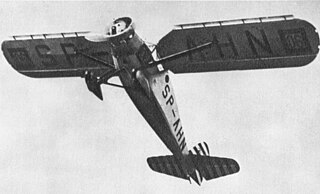
The RWD 6 was a Polish sports plane of 1932, constructed by the RWD team. It was a winner of the Challenge 1932 international tourist aircraft contest.

The RWD 5 was a Polish touring and sports plane of 1931, a two-seat high-wing monoplane, constructed by the RWD team. It was made famous by its transatlantic flight, being the smallest aircraft to cross the Atlantic.

The RWD 8 was a Polish parasol wing monoplane trainer aircraft produced by RWD. It was used from 1934 to 1939 by the Polish Air Force and civilian aviation.

The RWD-14 Czapla was a Polish army cooperation aircraft, designed in the mid-1930s by the RWD team, and produced in the LWS factory from 1938. A series of 65 aircraft were built and most were used by the Polish Air Force observation squadrons during World War II in 1939.

The LWS-3 Mewa ("Seagull") was a Polish observation and close reconnaissance aircraft, designed in the late-1930s by the LWS factory. It was ordered by the Polish Air Force, but did not manage to enter service before the outbreak of World War II.

The RWD 2 was a 1929 Polish single-engine high-wing monoplane sports plane constructed by the RWD team.

The RWD 3 was a 1930 Polish sports aircraft and liaison aircraft prototype, constructed by the RWD team, a single-engine high-wing monoplane.
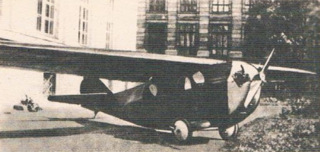
The RWD 1 was a Polish sports plane of 1928, a single-engine high-wing monoplane constructed by the RWD design team.

The RWD-10 was a Polish aerobatics sports plane, single-seat parasol wing monoplane, used from 1933 to 1939 and constructed by the RWD team.
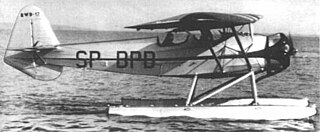
The RWD 17 was a Polish aerobatics-trainer aircraft of 1937, parasol wing monoplane, constructed by the RWD team.

The RWD 13 was a Polish touring plane of 1935, three-seater high-wing monoplane, designed by the RWD team. It was the biggest commercial success of the RWD.
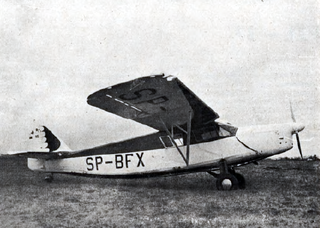
The RWD-15 was a Polish touring aircraft of 1937, designed by the RWD team and built by the Doświadczalne Warsztaty Lotnicze (DWL).

The Lublin R-XVI was a Polish passenger and air ambulance aircraft, designed in the 1930s in the Plage i Laśkiewicz factory in Lublin and built in a small series.

The RWD 23 was a Polish low-wing trainer aircraft of 1938, constructed by the RWD team, that remained a prototype.

The RWD-16 was a Polish two-seat low-wing sports plane of 1936, constructed by the RWD team, that remained a prototype.
The Lublin R-XII was the Polish three-seat sports and touring aircraft, designed in 1930 in the Plage i Laśkiewicz factory in Lublin, that remained a prototype.

The RWD 16bis and RWD 21 were Polish two-seat low-wing touring and sports planes of the late 1930s, constructed by the RWD bureau, sharing the same construction, main difference of the RWD 21 being a stronger engine.
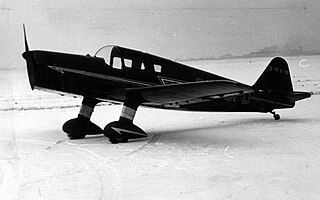
The RWD-19 was a Polish two-seat low-wing sports aircraft of 1938, constructed by the RWD bureau.
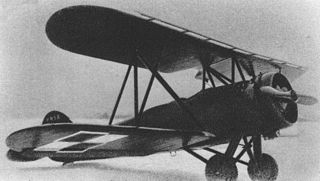
The PWS-6, was a Polish liaison aircraft, developed in 1930 by the PWS, that remained a prototype.

The PWS-11 was a Polish aerobatic and trainer aircraft, developed in 1928-1929 by PWS, which remained a prototype.



















